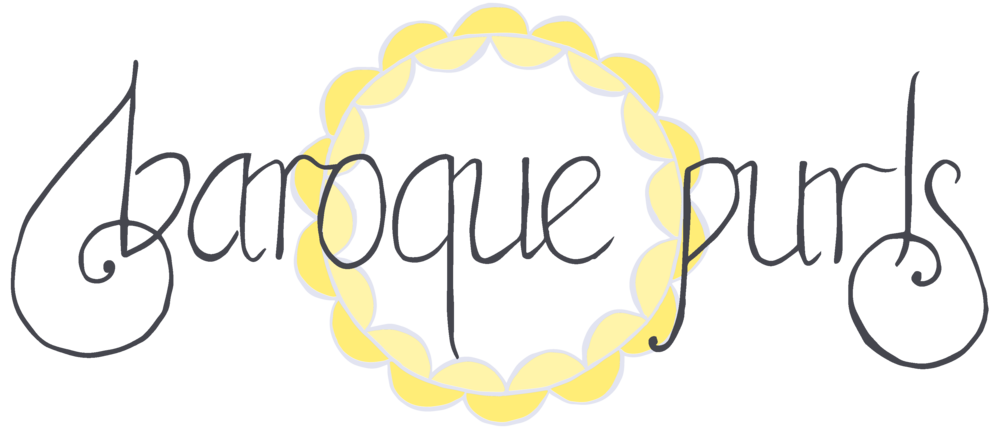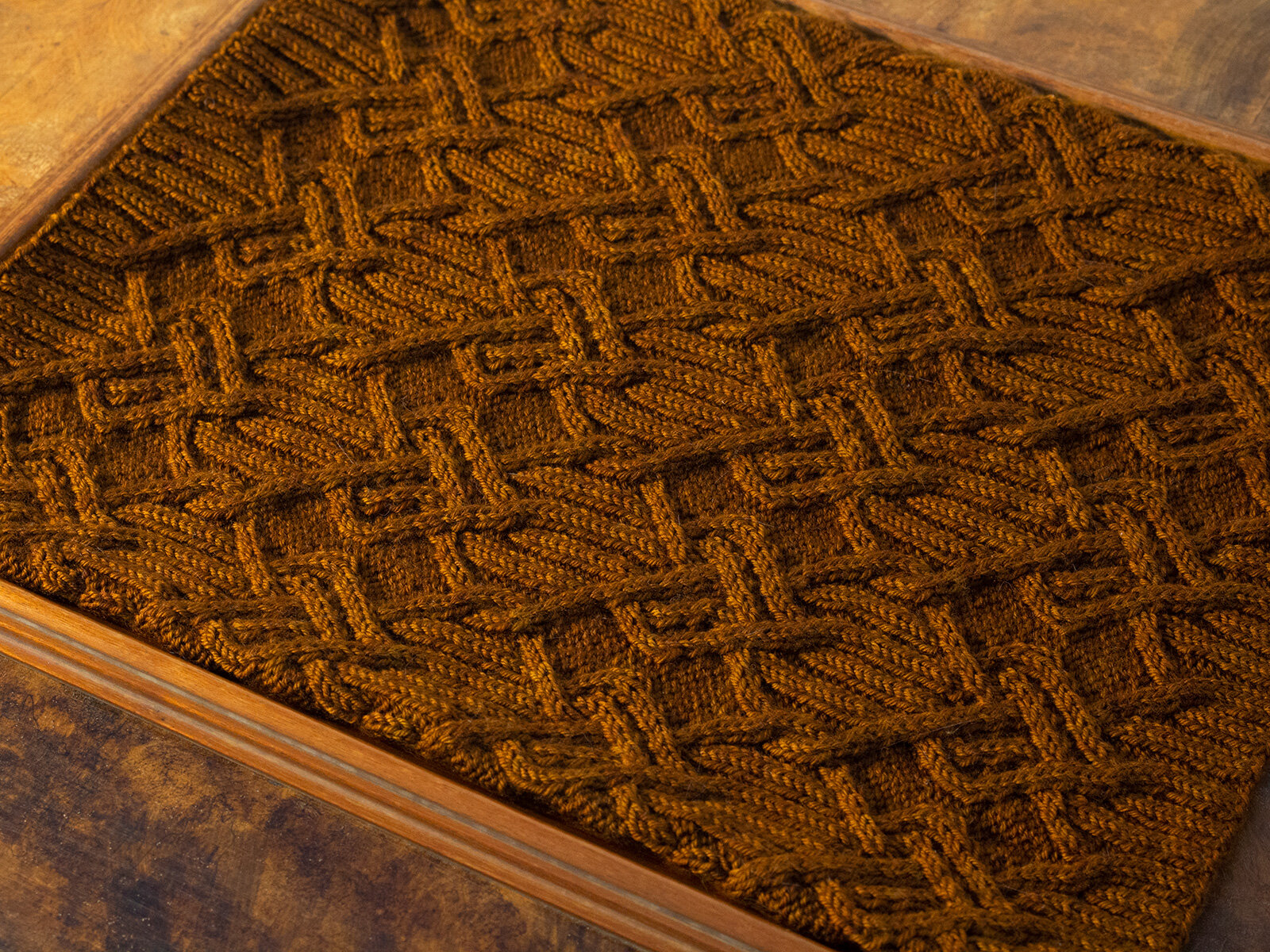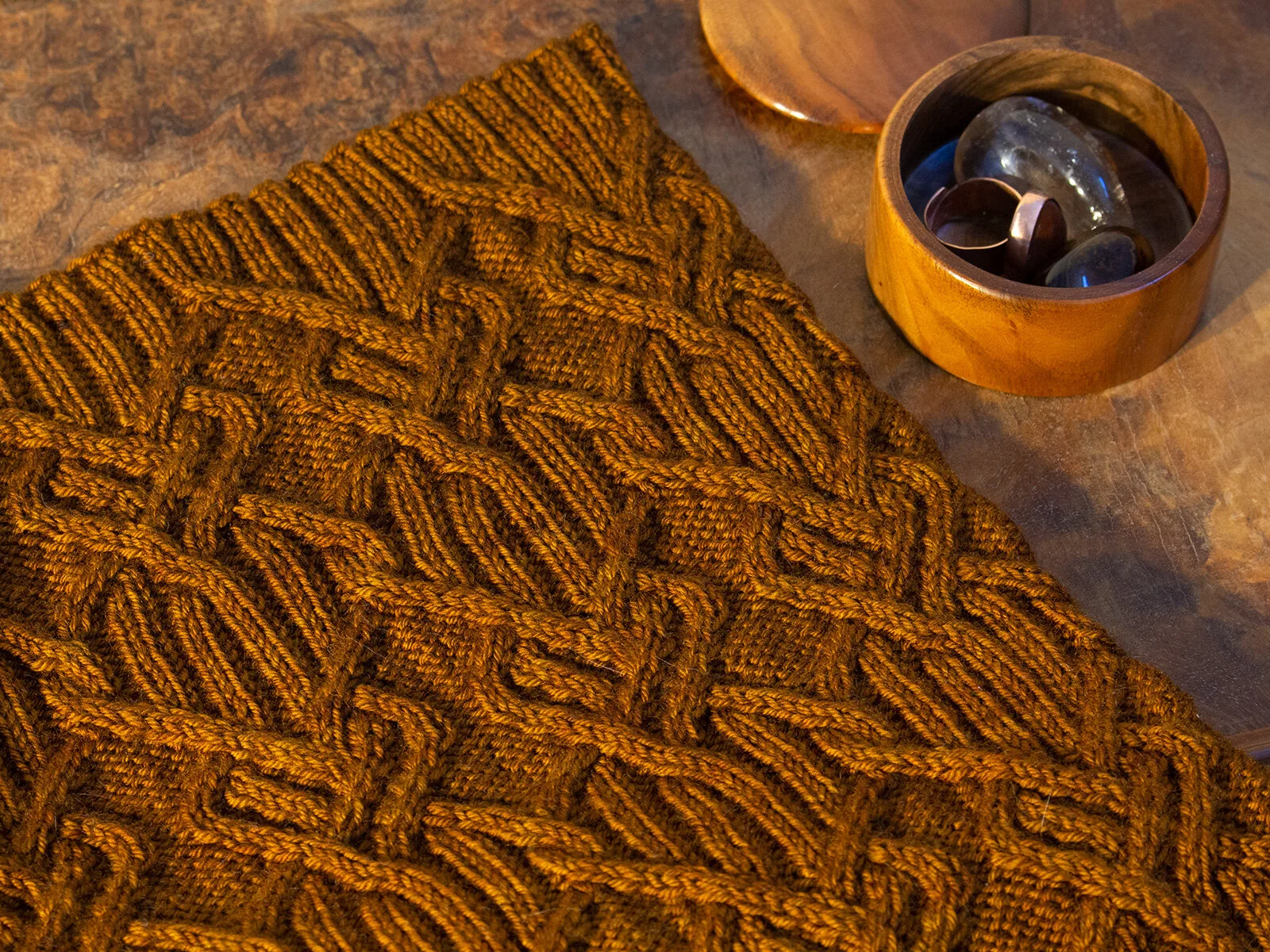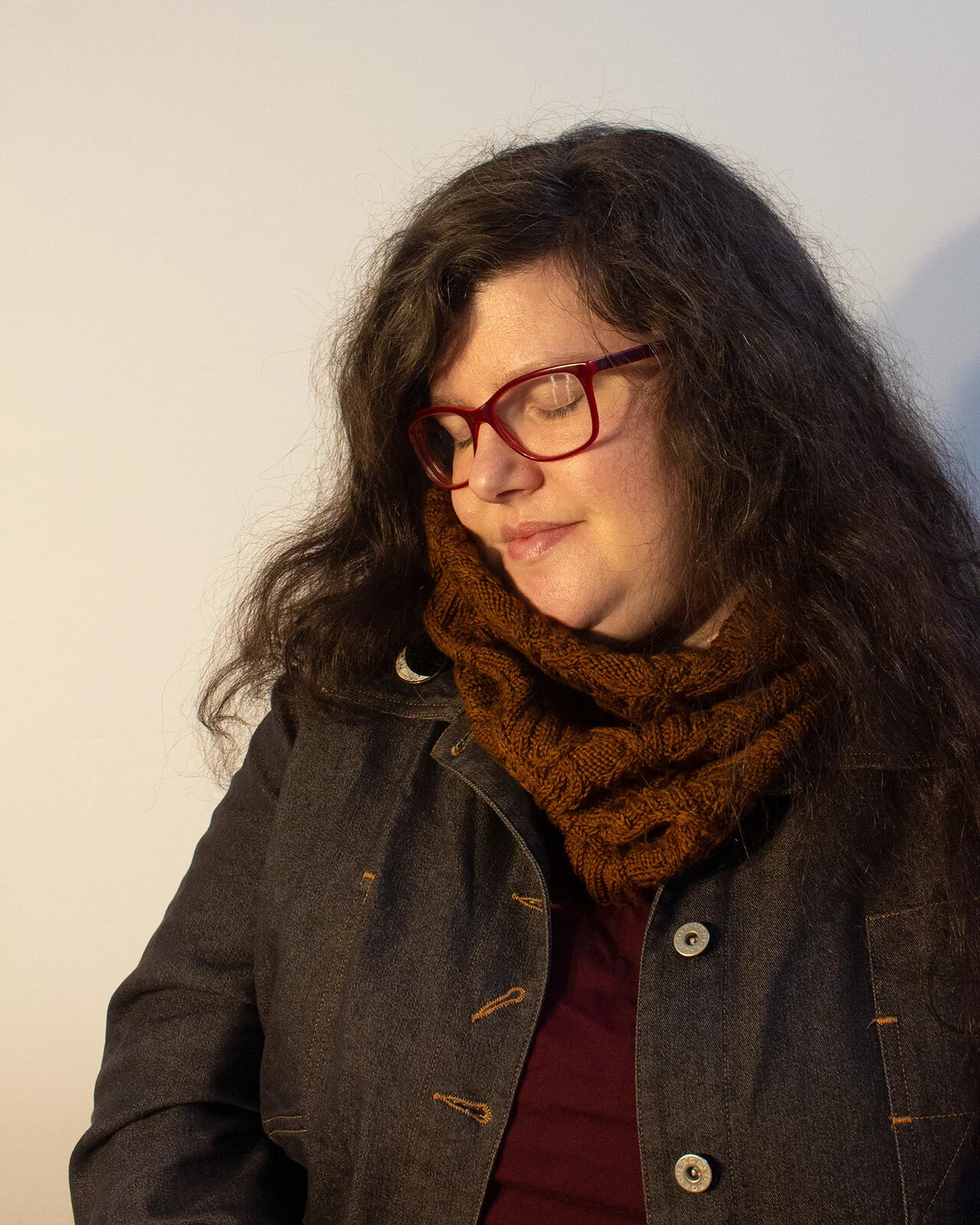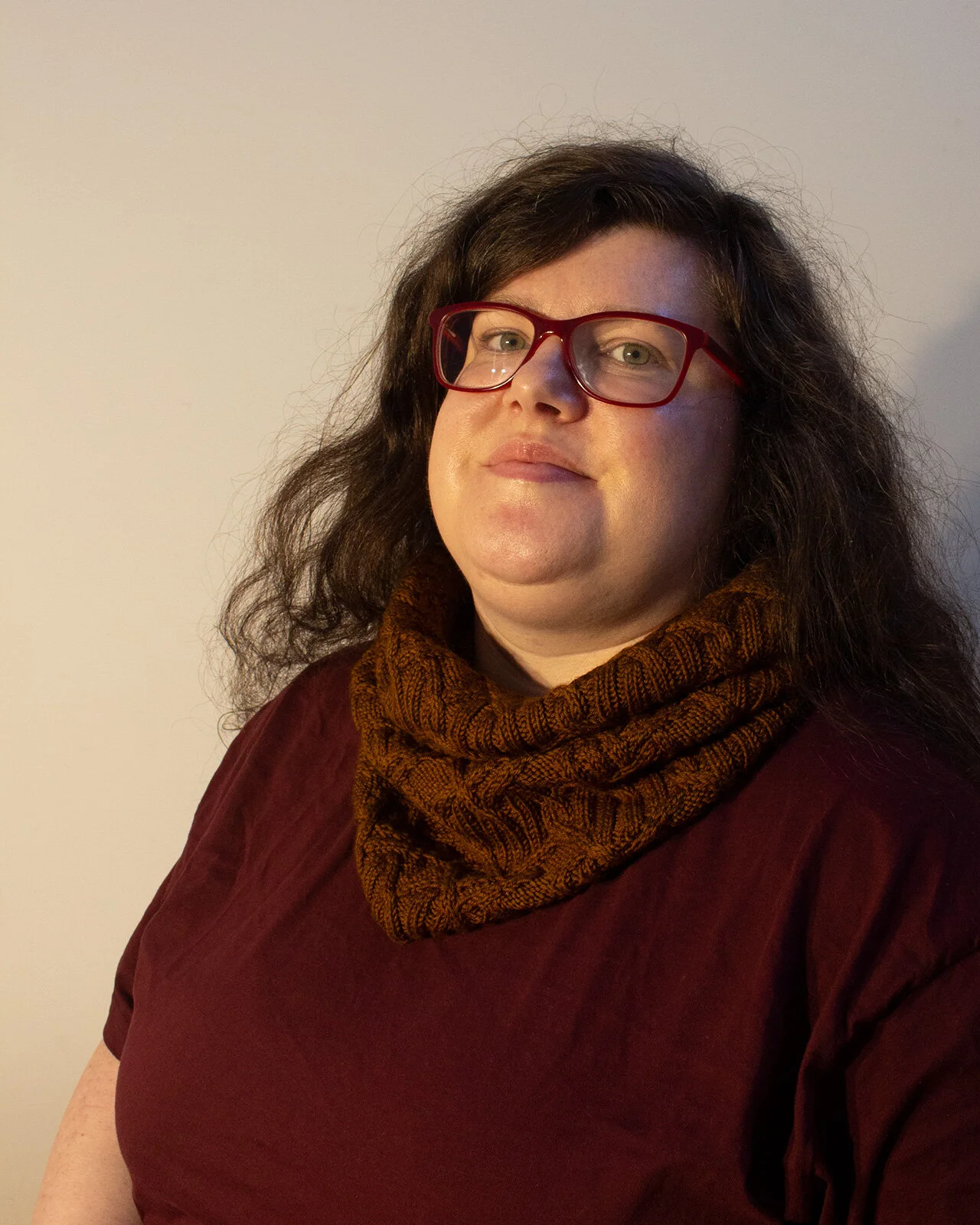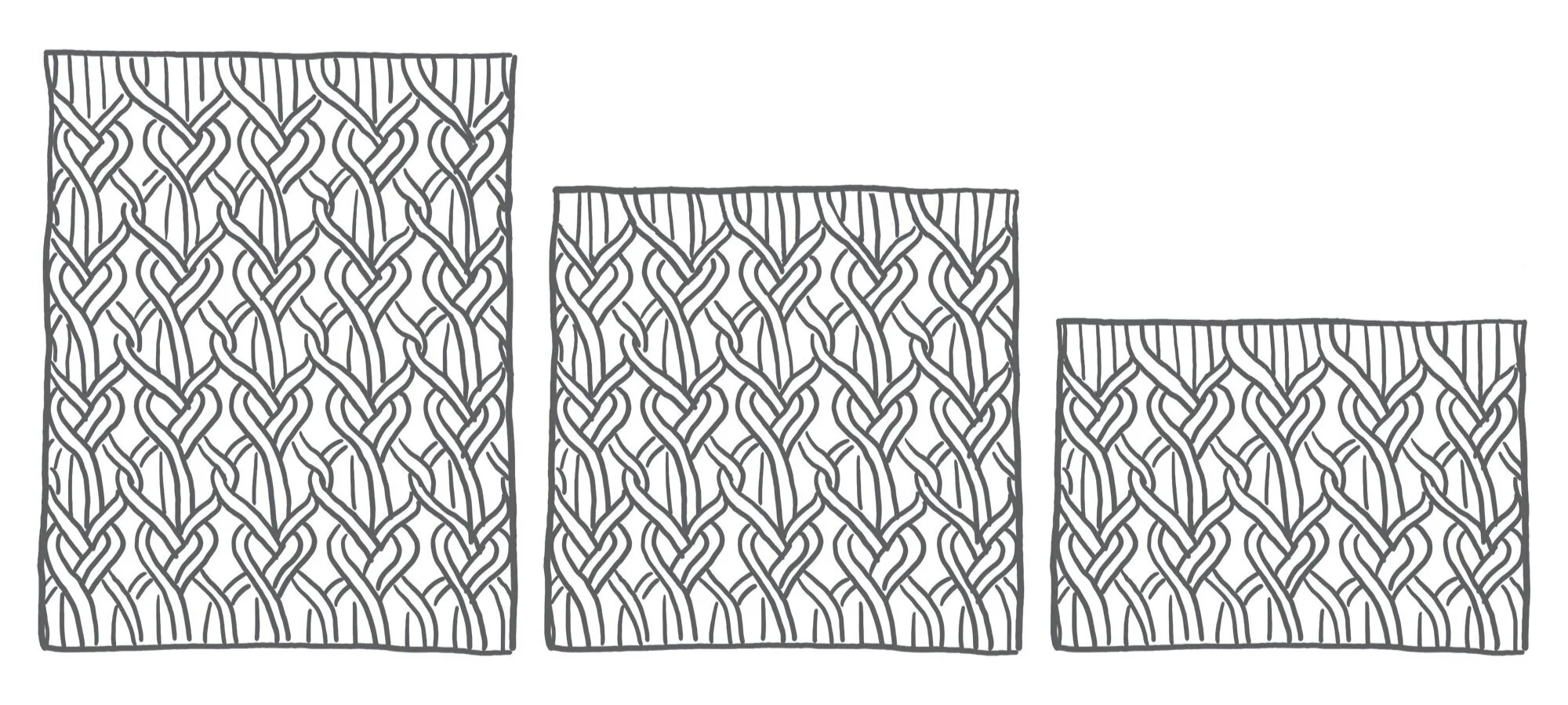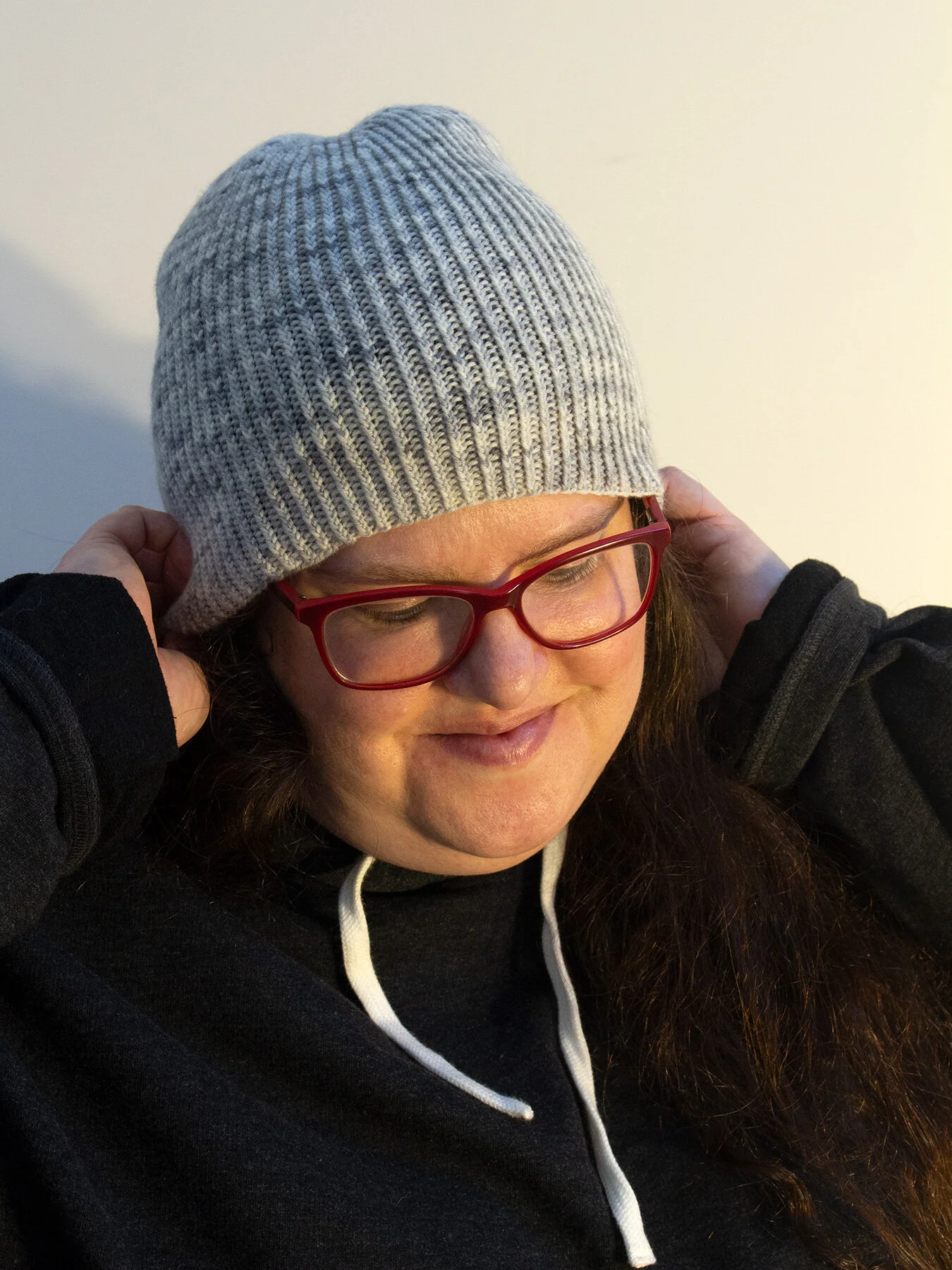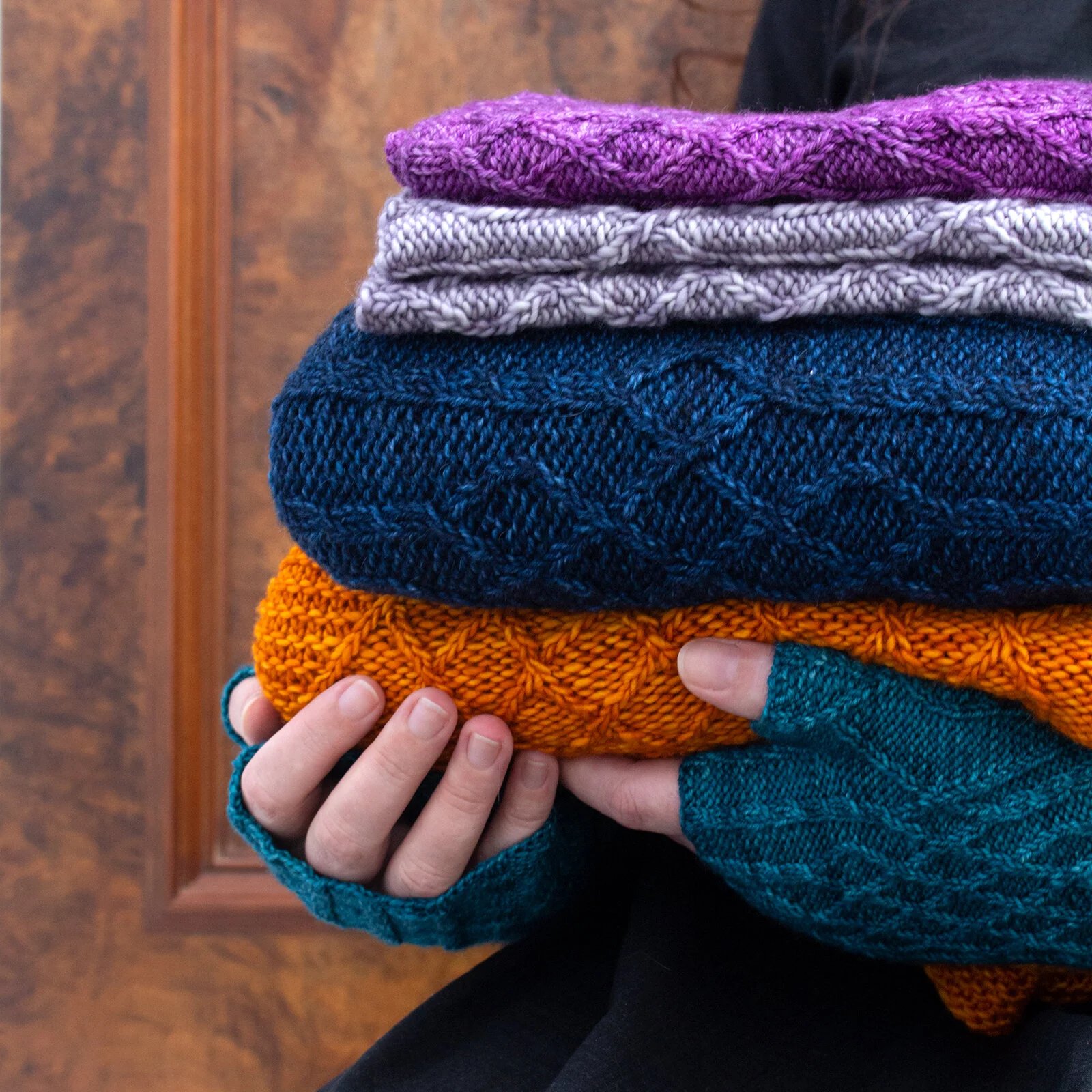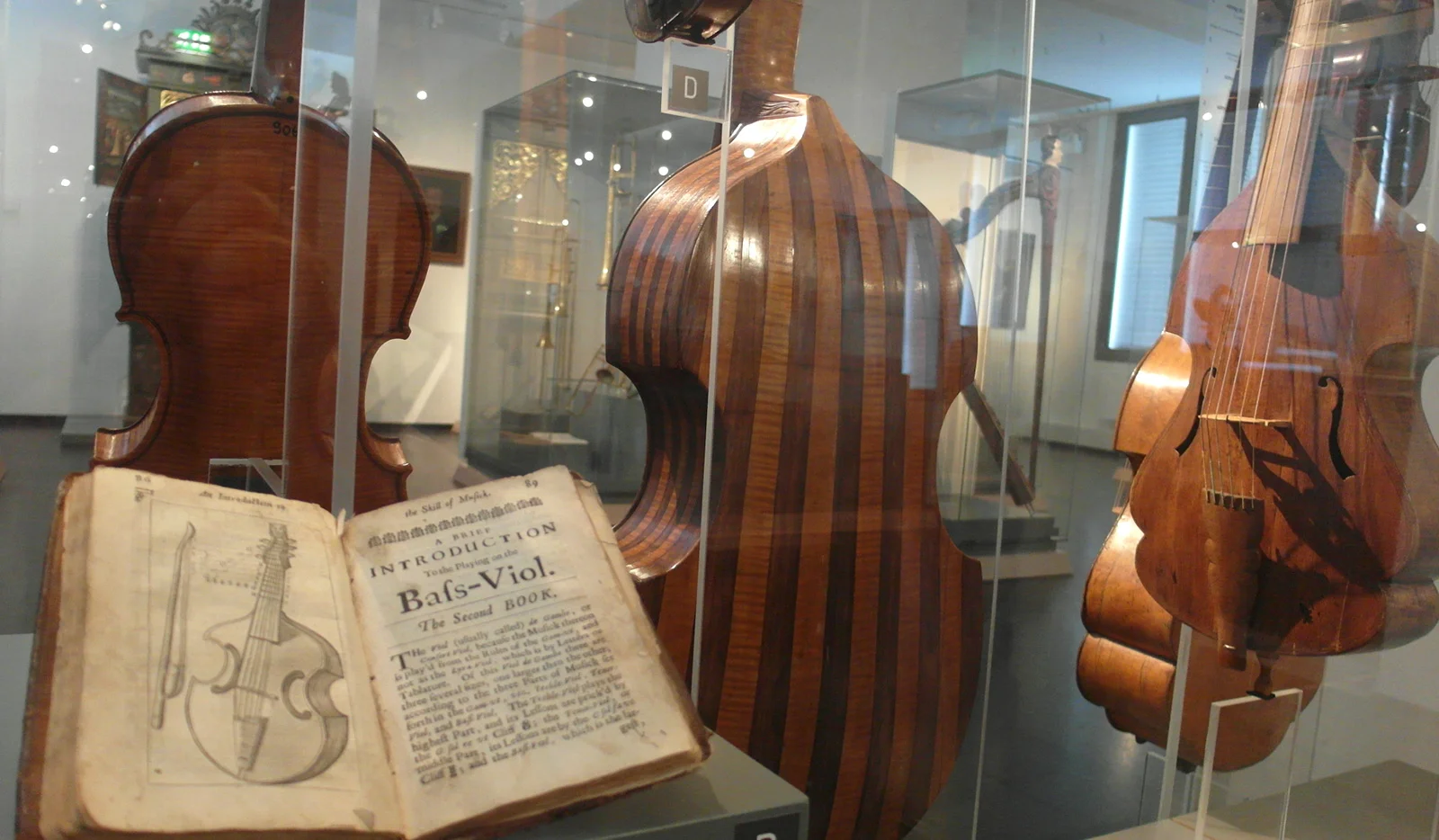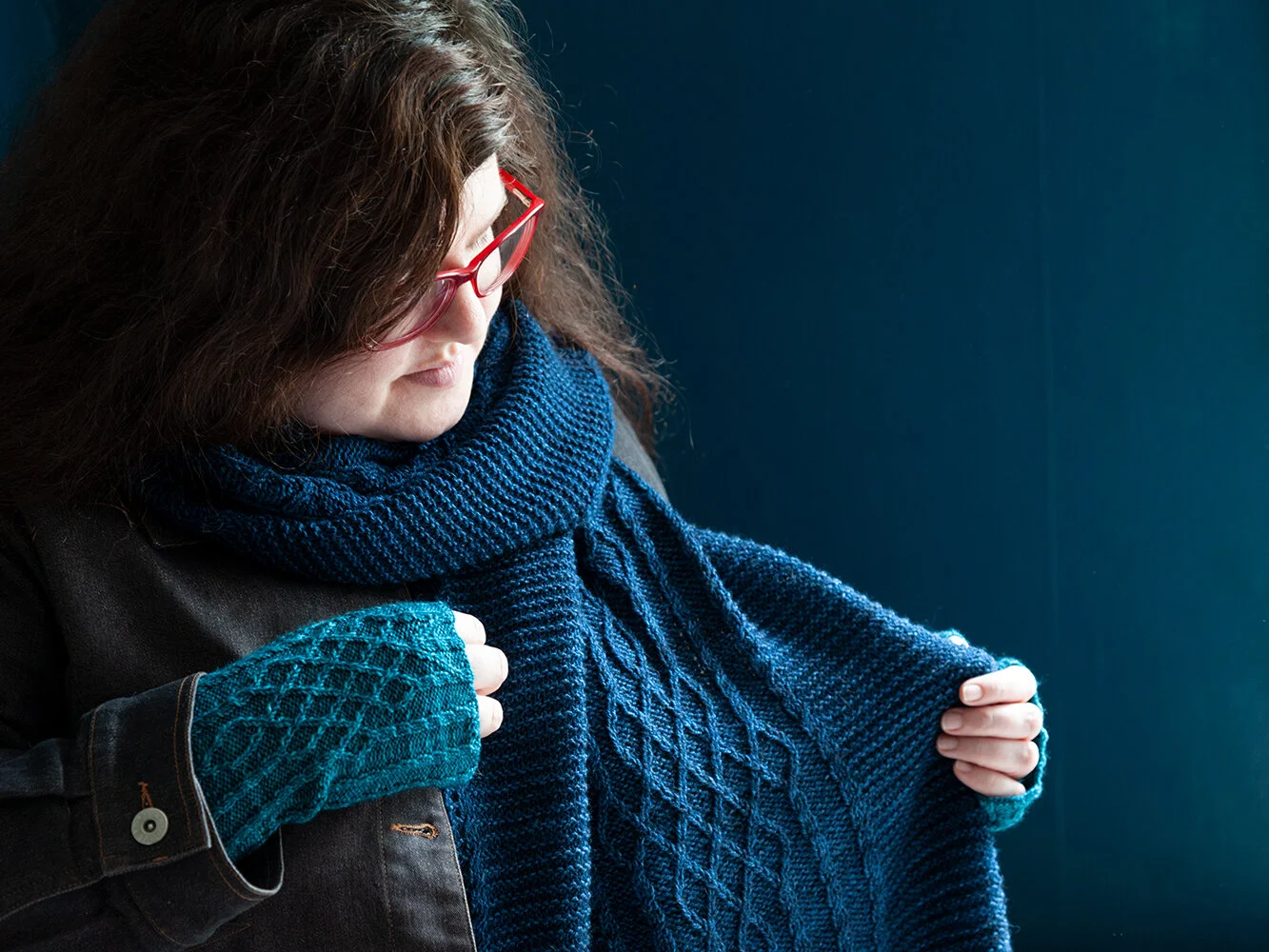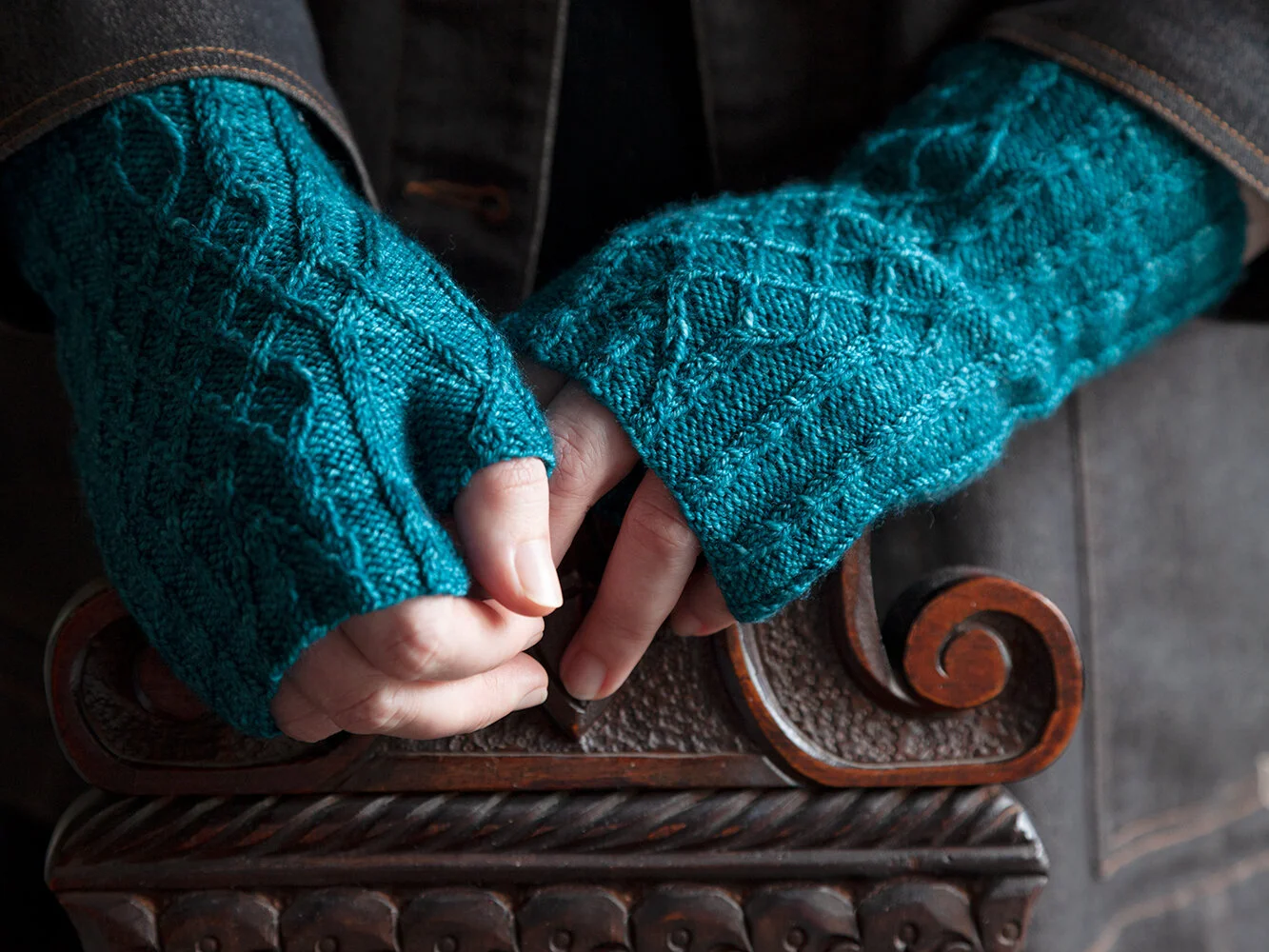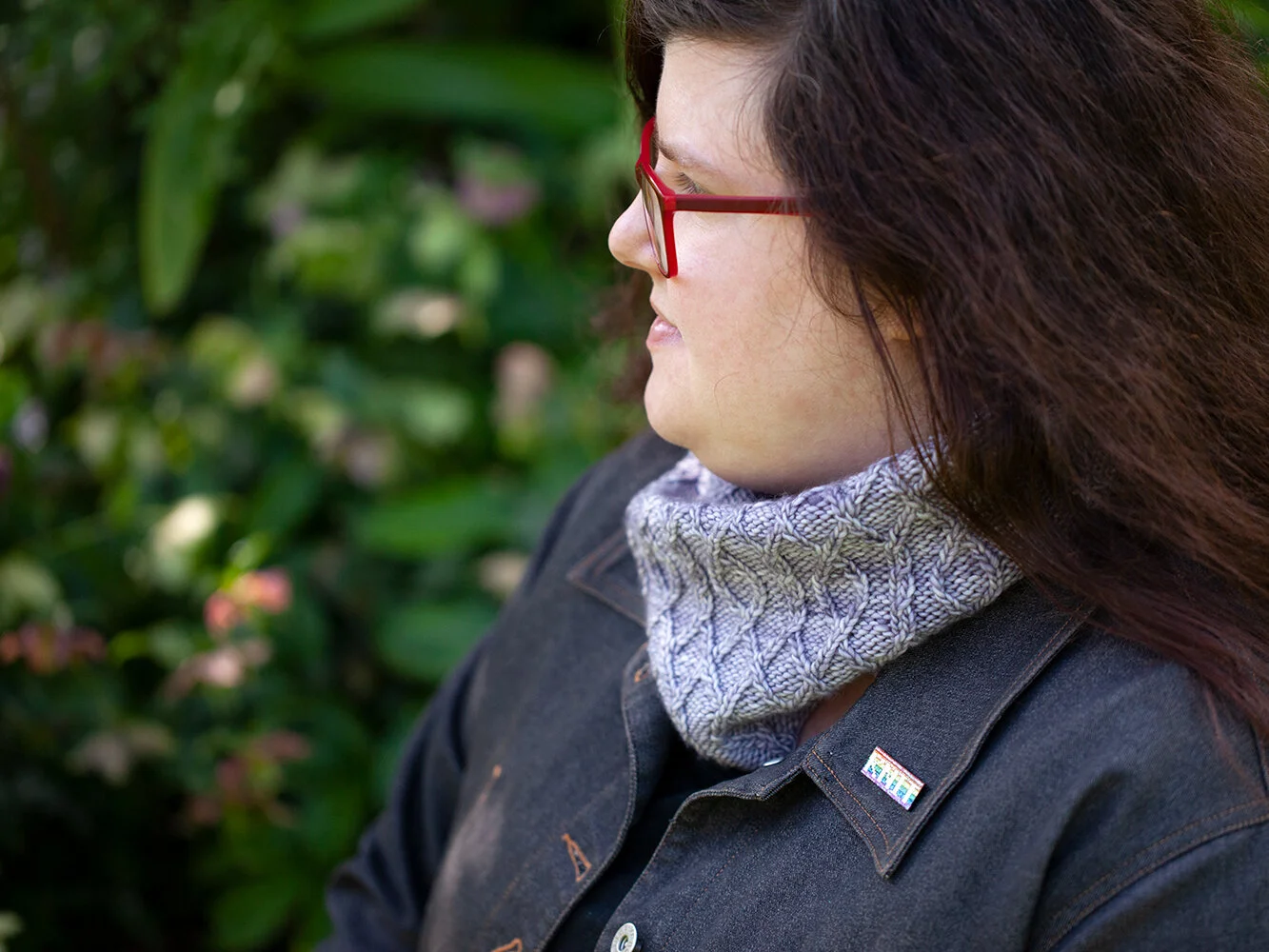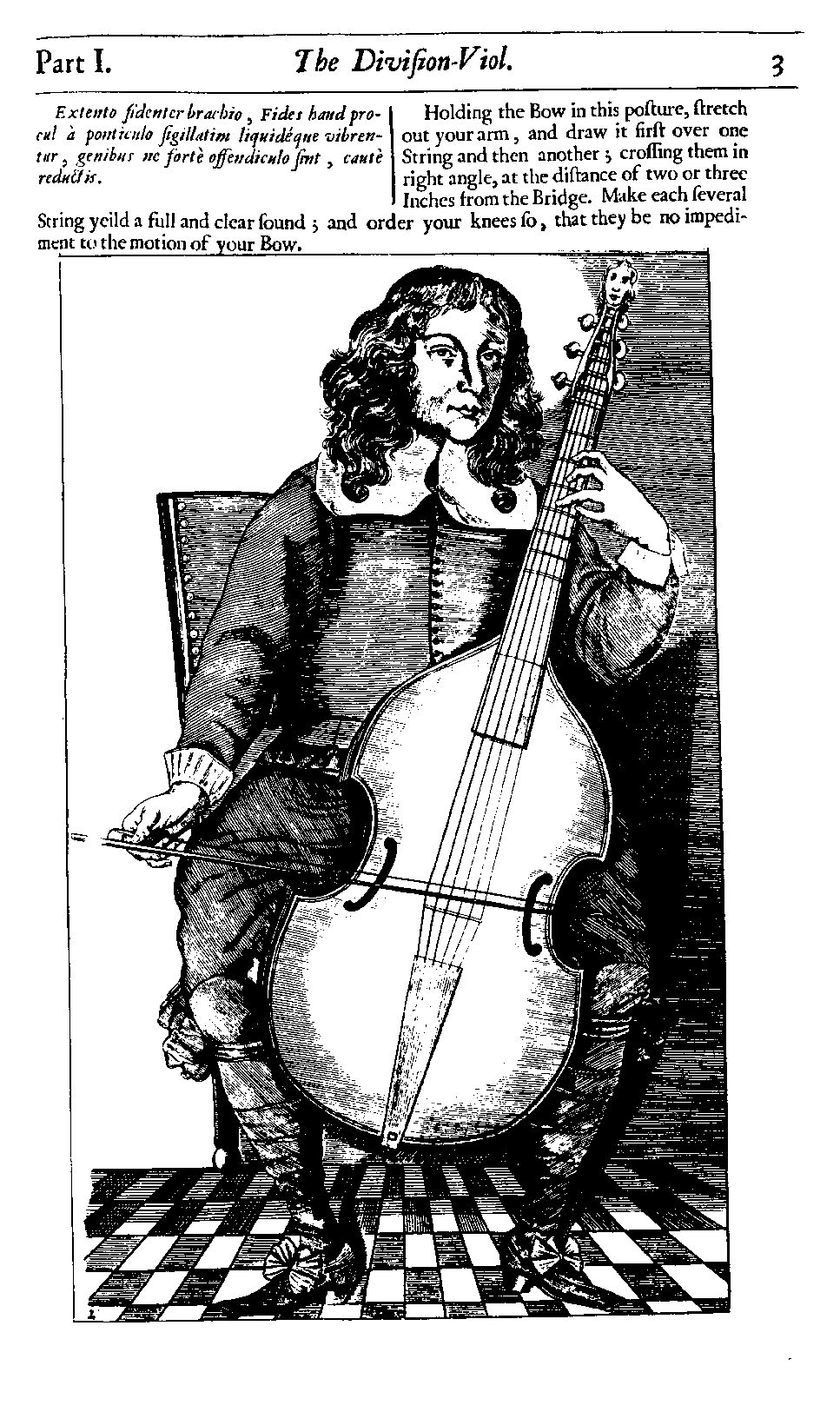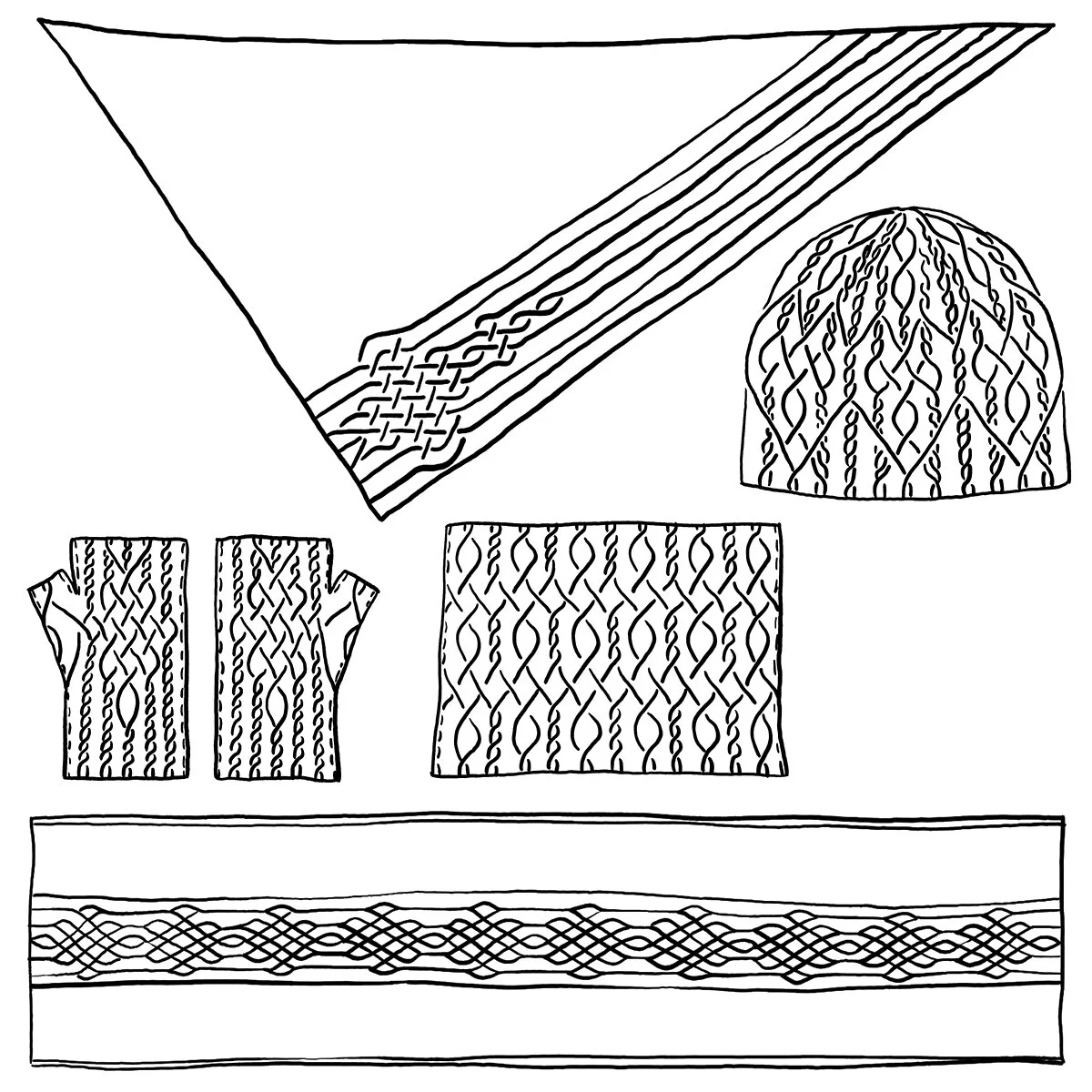Getting this pattern from the idea stage to its final form has followed a similar path to my Beanstalk Hat from earlier this year - a long and meandering path! At first I intended to design a DK-weight hat with columns of heart-shaped cables, but I couldn’t find a solution I liked for the crown decreases that resulted in a well-balanced-looking hat. Eventually, after a lot of ripping-out of hat crowns, I realised a cowl would work beautifully with the heart-cables flowing in and out of 2x2 ribbing. One more swatch in fingering-weight yarn, and I had my design all planned out.
(Note: Just recently I came up with another idea for the disagreeable hat decreases, so a matching hat just might be in the cards!)
I started knitting the sample for the Heartwood Cowl back in early August, at the beginning of the second Melbourne lockdown. It’s an absorbing knit which requires concentration, and between the warm comforting colour and the slightly fiddly cables it’s been the perfect lockdown project for me. The cowl’s pattern of intertwined cabled hearts is a slightly on-the-nose design element in honour of my loved ones back home in New Zealand, who I hope to be able to see next year if all goes well in the world.
The delicious brown yarn I used to knit the sample is a fingering-weight merino from Happy Hank Co - Classy Fingering (100% superwash merino; 437yds/400m per 100g skein) in the Cinnamon colourway. The combination of a fingering-weight yarn and densely-cabled texture produces a squishy and substantial fabric, with a little more drape than you might get from a heavier yarn. When choosing the yarn for this pattern, look for a smooth, multi-plied, worsted-spun yarn for a similar effect. I recommend choosing a solid or near-solid colourway to show off the texture.
I’ve included three height options in the pattern, the shortest of which uses only a single skein. The circumference is also easy to adjust to your preference by adding or subtracting repeats. Some of my wonderful test knitters even adapted the pattern to different yarn weights for their projects, including DK, worsted, and aran weights. If you’d like to use a heavier yarn, I’d recommend planning for fewer repeats - for example you might cast on eight 24-stitch repeats instead of the original ten.
Skills needed to work this pattern include the Long Tail Cast On (or your favourite for 2x2 rib), working in the round, and working 2-over-2 cables. There are also a few six-stitch cables in the mix, confined to three rounds per pattern repeat. Both charts and full written instructions are included.
Heartwood Cowl features:
a cowl knit in the round from the bottom up, with an all-over texture of cabled hearts and ribbing
three height options are included in the pattern, the shortest of which uses only a single skein, and the circumference is easily adjustable to your preference
requires 351 (496, 641)yds/321 (453, 586)m of fingering-weight yarn (shown in Happy Hank Co Classy Fingering)
choose a smooth, multi-plied, worsted-spun yarn in a solid or near-solid colour
cowl dimensions, relaxed after blocking: 24”/61cm in circumference, and 7.5 (10.75, 14)”/19 (27.5, 36)cm high from cast-on to bind-off. Sample shown in 14”/36cm height
charts and written instructions are both provided in full.
Find out more about my Heartwood Cowl pattern, including Ravelry and Payhip purchase options.
